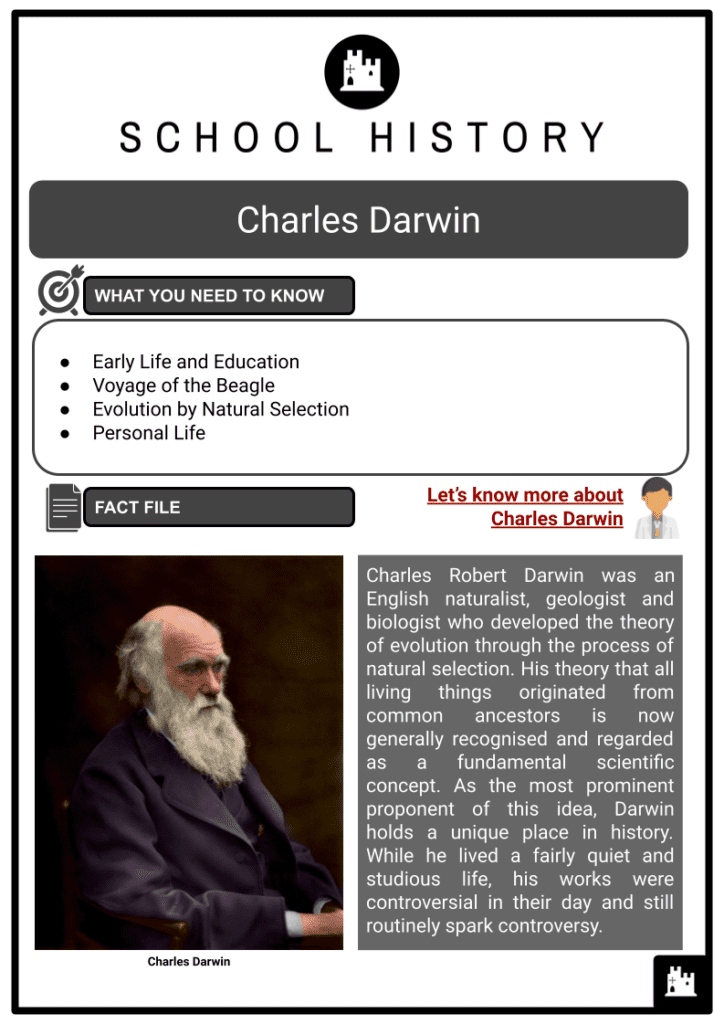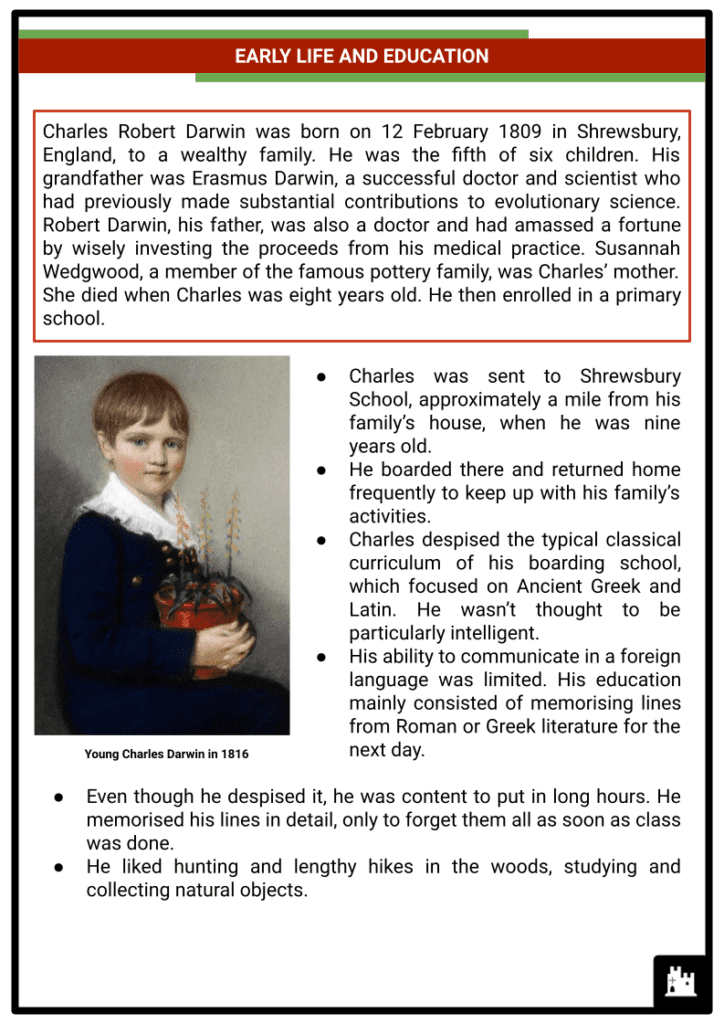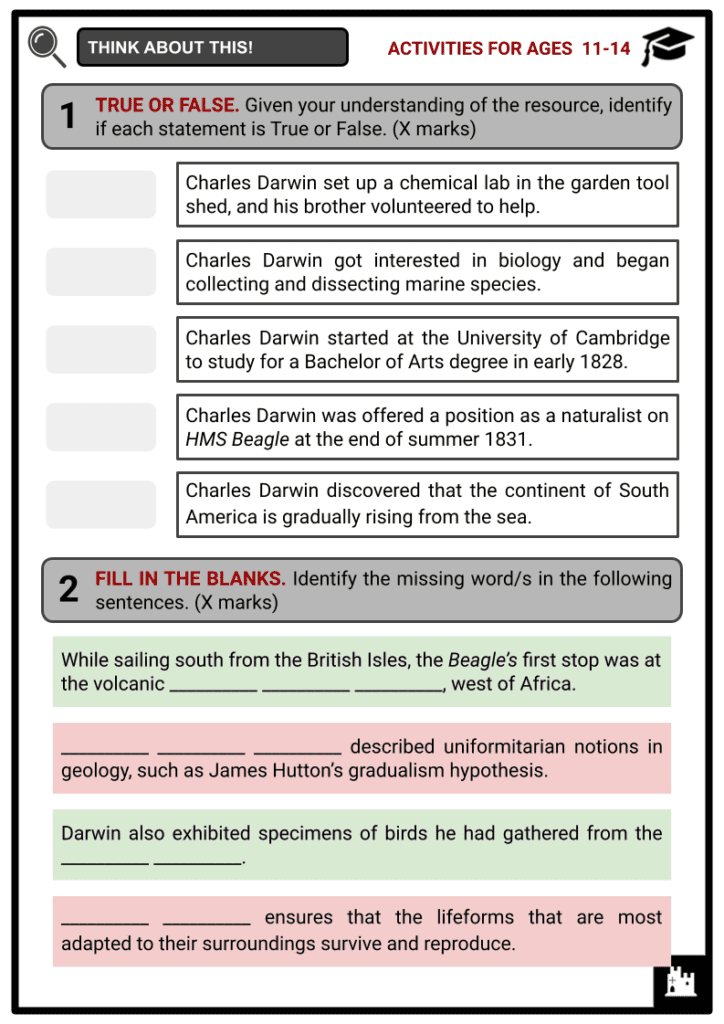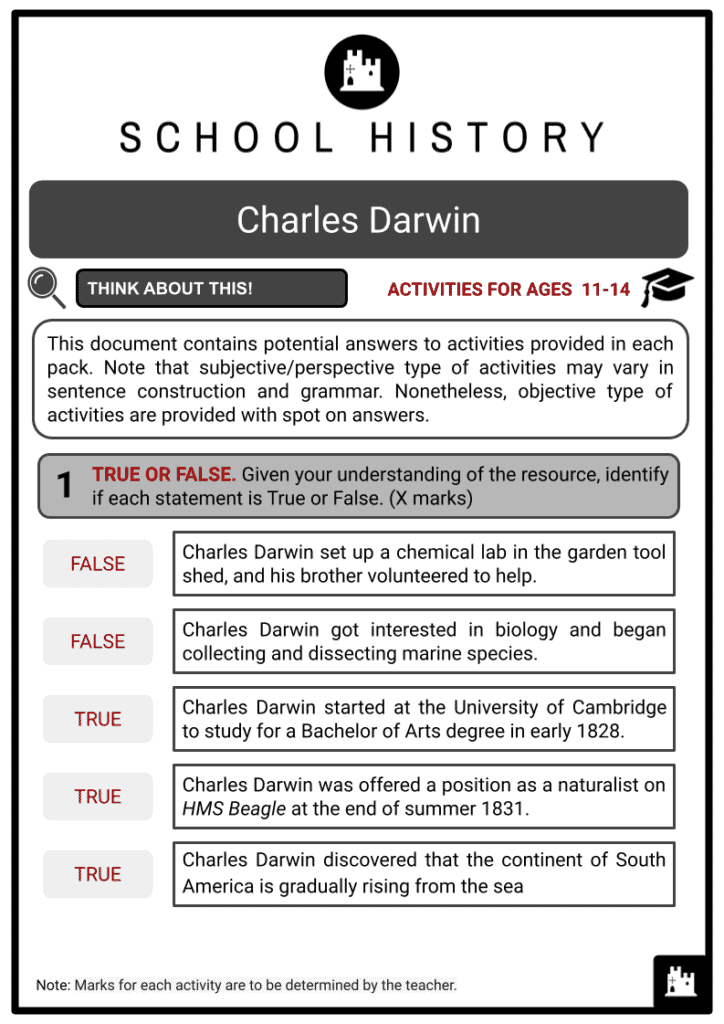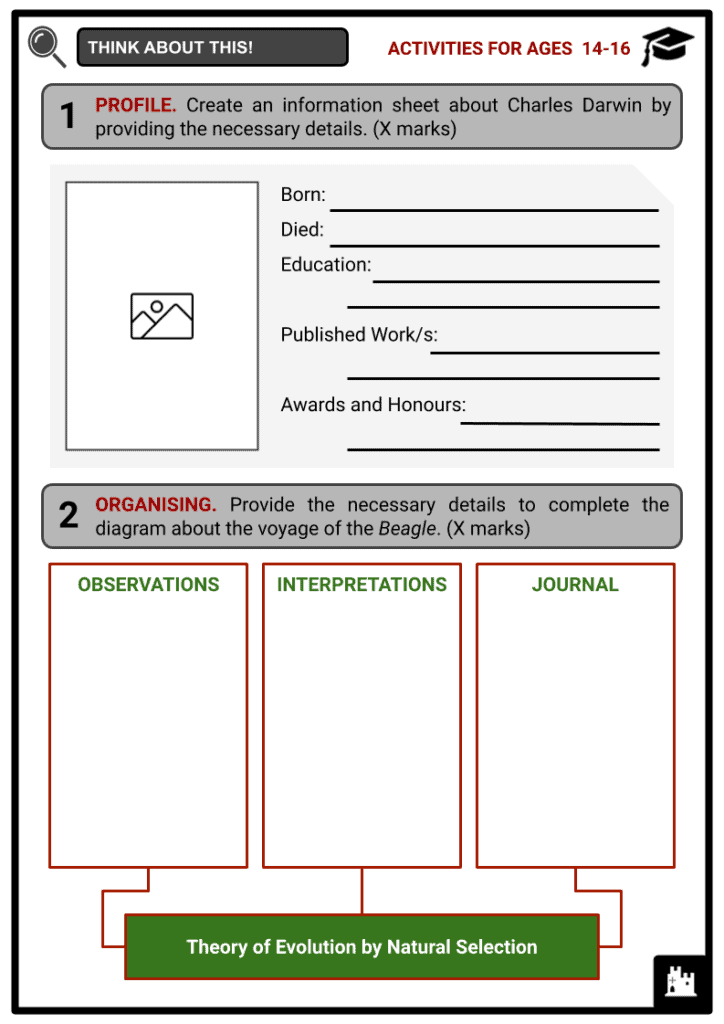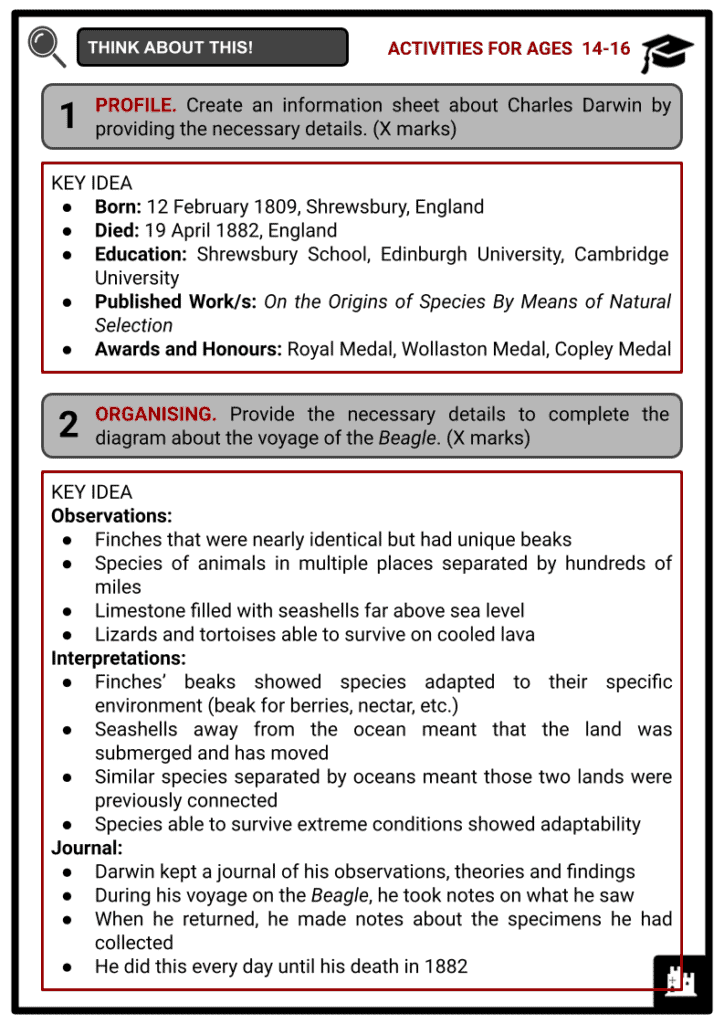Download Charles Darwin Worksheets
Do you want to save dozens of hours in time? Get your evenings and weekends back? Be able to teach about Charles Darwin to your students?
Our worksheet bundle includes a fact file and printable worksheets and student activities. Perfect for both the classroom and homeschooling!
Summary
- Early Life and Education
- Voyage of the Beagle
- Evolution by Natural Selection
- Personal Life
Key Facts And Information
Let’s know more about Charles Darwin!
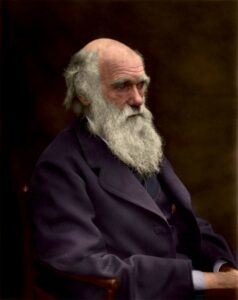
Charles Robert Darwin was an English naturalist, geologist, and biologist who developed the theory of evolution through the process of natural selection. His theory that all living things originated from common ancestors is now generally recognised and regarded as a fundamental scientific concept. As the most prominent proponent of this idea, Darwin holds a unique place in history. While he lived a fairly quiet and studious life, his works were controversial in their day and still routinely spark controversy.
Early Life and Education
- Charles Robert Darwin was born on 12 February 1809 in Shrewsbury, England, to a wealthy family. He was the fifth of six children. His grandfather was Erasmus Darwin, a successful doctor, and scientist who had previously made substantial contributions to evolutionary science. Robert Darwin, his father, was also a doctor and had amassed a fortune by wisely investing the proceeds from his medical practice. Susannah Wedgwood, a member of the famous pottery family, was Charles’ mother. She died when Charles was eight years old. He then enrolled in a primary school.
- Charles was sent to Shrewsbury School, approximately a mile from his family’s house, when he was nine years old. He boarded there and returned home frequently to keep up with his family’s activities. Charles despised the typical classical curriculum of his boarding school, which focused on Ancient Greek and Latin. He wasn’t thought to be particularly intelligent. His ability to communicate in a foreign language was limited. His education mainly consisted of memorising lines from Roman or Greek literature for the next day.
- Even though he despised it, he was content to put in long hours. He memorised his lines in detail, only to forget them all as soon as class was done. He liked hunting and lengthy hikes in the woods, studying and collecting natural objects.
- His brother set up a chemical lab in the garden tool shed, and Charles volunteered to help with experiments, often late at night. His favourite subject was chemistry. Regrettably, it was not included in his school’s curriculum. In fact, his headmaster scolded him for ‘wasting his time’ on chemistry.
- Charles enrolled at the University of Edinburgh as a medical student in 1825, at the age of 16. Charles, unlike his father, did not like medical school. He chose not to worry about completing his exams since he was confident that his father would provide him with enough money to live comfortably.
- Charles got interested in zoology in his second year at Edinburgh, and he began collecting and dissecting marine species. He also went to geology courses, although he considered them to be quite dull. Charles’ medical studies were put on hold by his irritated father. He withdrew his son from Edinburgh and sent him to Cambridge University, hoping that his lazy son would become a Church of England clergyman.
- Charles Darwin started at the University of Cambridge to study for a Bachelor of Arts degree in early 1828, just before his 20th birthday. After three easy years, he obtained his BA with grades that put him towards the top of the class. He’d spent a lot of time hunting, eating, drinking and playing cards, which he genuinely liked.
Voyage of the Beagle
- Darwin was offered a position as a naturalist on HMS Beagle, one of the British Royal Navy survey ships, at the end of summer 1831, after completing his degree. The job had been offered to John Henslow, a Cambridge geologist and naturalist, but he had declined and suggested Darwin instead.
-
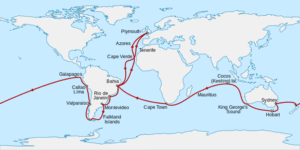
Voyage of the Beagle The Beagle was set to go on a long journey to the South Seas. Darwin would have to pay for his passage on the ship, but he would be free to gather specimens and return them to the UK for his use or profit. It was an excellent opportunity for him to follow in the footsteps of his inspiration, Alexander von Humboldt. Darwin was adamant about grabbing it with both hands. With some hesitation, his father consented to pay for his son’s voyage.
- While sailing south from the British Isles, the Beagle’s first stop was at the volcanic Cape Verde Islands, west of Africa. Darwin discovered seashells on the cliffs nearby. The captain of the Beagle, a naturalist, assisted Darwin in explaining the finding by providing him with a copy of Charles Lyell’s Principles of Geology.
- Principles of Geology described uniformitarian notions in geology, such as James Hutton’s gradualism hypothesis, which was initially suggested late in the previous century. Charles Lyell, the book’s author, would become one of Darwin’s closest friends and supporters a few years later.
- Darwin kept writing about his adventures in each new location he visited, collecting samples of flora, animals and fossils, and analysing geological formations. On the Galapagos Islands, he witnessed a wide range of strange and unique creatures. Each island seems to have its own unique species of wildlife.
- In October 1836, Darwin returned to England. He had maintained contact with John Henslow, giving him notes on his geological work on the trip on a regular basis.
- He compiled his observations into a 31-page pamphlet, which he disseminated widely across Cambridge’s scientific community. Henslow also exhibited Darwin’s fossils, which sparked even more interest.
- His father was relieved that his prediction that Charles would bring the family into disgrace had proven to be wrong. In the field of natural science, Charles Darwin was now admired, and his father consented to continue sponsoring his research. In reality, other people saw the worth in Darwin’s work, and the British government gave him a large grant to write up his observations from the Beagle’s expedition.
- Despite the fact that Darwin set sail as an unknown graduate, he returned as a renowned and well-known scientist. He also amassed a big and intriguing collection of specimens, which naturalists were eager to study and classify.
- Darwin discovered that the continent of South America is gradually rising from the sea. Darwin presented this paper to the Geological Society of London at the beginning of 1837, thanks to Charles Lyell, whose geology book influenced Darwin on the voyage.
- Darwin also exhibited specimens of birds he had gathered from the Galapagos Islands at the same meeting. Within a week, naturalist John Gould had inspected the specimens and determined that the birds belonged to a whole new species of finch. Twelve new bird species and a new finch group were discovered by Darwin.
Evolution by Natural Selection
- On his long voyage, at times fascinated by nature’s abundance, Darwin’s thoughts had increasingly turned to the question of how different species had formed. Thousands of years before Darwin’s time, the notion of evolution had been developed. Erasmus Darwin, his grandfather, had made several significant contributions to evolutionary theory, including the concept of a common origin for all life.
- By December 1838, Darwin had pondered how breeders could enhance domestic animals by choosing the best individuals. In the natural world, the environment does the selection. Natural selection ensures that the lifeforms that are most adapted to their surroundings survive and reproduce.
- He presented his opinions on the new species of finches he discovered in the Galapagos Islands in 1845, claiming he could imagine that one original species had been modified into all the numerous species that he had developed much earlier.
- Darwin could have published a theory of evolution by natural selection in 1839 if he had been a more ambitious scientist, but he didn’t. He continued:
- gathering and weighing evidence from his journey, as well as evaluating specimens;
- breeding animals and plants to see how artificial selection may change species; and
- writing books and papers about a variety of topics including geology.
- On 24 November 1859, Charles Darwin’s game-changing book On the Origin of Species – generally referred to as the most important book in the history of biology – was released to the public, and all 1250 copies were quickly sold.
- Darwin avoided making any claims for the origin of a specific species, such as Homo sapiens, in order to avoid dispute. He did however, in agreement with his grandfather’s much earlier theory, write: “...probably all the organic beings which have ever lived on this earth have descended from some one primordial form, into which life was first breathed”.
-
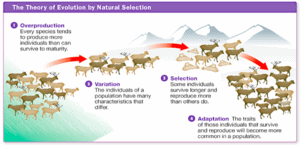
Theory of Evolution by Natural Selection according to Darwin Darwin continued to update the book throughout the years. He went on to write six distinct editions of the book. Some of Darwin’s most well-known concepts did not emerge until subsequent editions: the famous term ‘survival of the fittest’ only appeared in the 1869 fifth edition. Remarkably, the term ‘evolution’ first appeared in the sixth edition of the book in 1872.
Personal Life
- On 29 January 1839, Darwin married Emma Wedgwood. He was 29 years old, and she was 30. They were first cousins. The couple had ten children, three of which died in childhood. George, Francis and Horace, three of their sons, were prominent scientists and were elected fellows of the Royal Society. George went on to study astronomy, Francis botany, and Horace engineering. Leonard, another son, helped to fund the publishing of Ronald Fisher’s first book.
- Darwin became unwell in 1837, just as he began working on a multi-volume collection of findings from the Beagle trip and began actively exploring species transmutation. He would be plagued by ill health for the rest of his life.
- In 1842, he and his family relocated to a country residence outside of London, away from the pollution and smog. He led a solitary existence, rarely mingling and instead focusing on his family and publishing books and scholarly articles. Darwin received the Copley Medal, the highest award in science at the time, in 1864.
- Charles Darwin died of heart failure at his country house on 19 April 1882, at the age of 73. He was buried in Westminster Abbey, London, alongside his best friend Charles Lyell, whose work had impacted him considerably, and next to John Herschel, whose work had inspired him at university. Isaac Newton, Ernest Rutherford, JJ Thomson and Lord Kelvin are among the scientists buried near Darwin in Westminster Abbey.

